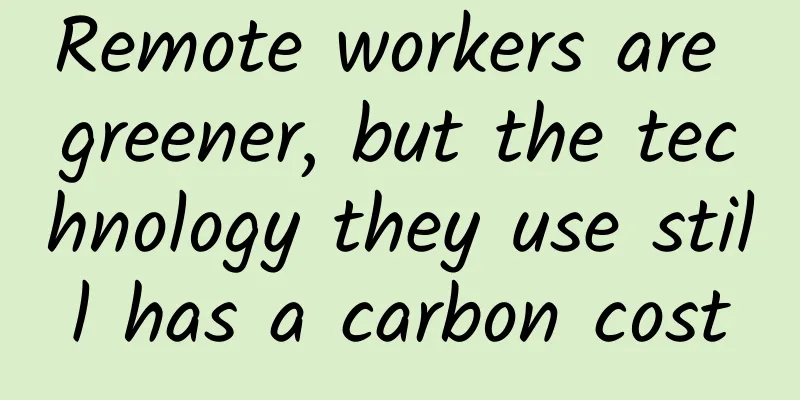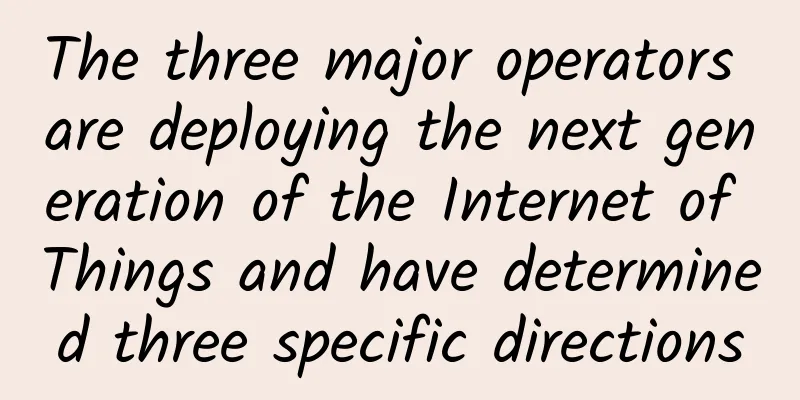Remote workers are greener, but the technology they use still has a carbon cost

|
According to foreign media TechCrunch, affected by the COVID-19 pandemic, many companies are turning to remote work models, resulting in a significant reduction in emissions from vehicles and other sources, but it also has its own costs. A new study proposes a tentative carbon cost for the connectivity and data infrastructure that makes working from home possible. These researchers from Purdue University, Yale University and MIT attempted to analyze the carbon, land and water costs of Internet infrastructure. "To build a sustainable digital world, it is necessary to carefully assess the environmental footprint of the Internet and identify the individual and collective actions that have the greatest impact on its development," they write in the paper's introduction. Using a single metric is too simplistic, they argue. Carbon emissions are a useful metric, but it’s also important to track where the electricity comes from, the water costs (from cooling and operating data centers), and the theoretical “cost of the land” needed to produce the product. “In any kind of calculation on this global scale, you need to make a lot of assumptions, and a lot of the data you need is missing,” said study lead author Kaveh Madani of Yale University in an email to TechCrunch. “But it’s a good start, and the best we could do with the data we had.” (Madani noted that a lack of transparency in the industry, rather than a lack of statistical and scientific rigor, was a bigger impediment to the study’s accuracy.) In one example they found, an hour of HD video streaming produced up to 440 grams of CO2 emissions -- YouTube's CO2 emissions ranged from 1,000 grams to 160 grams for Zoom and video conferencing, depending on the quality of the video. By comparison, the EPA says a modern car produces 8,887 grams of CO2 per gallon of gas. However, turning off the camera during an internet call could reduce those footprints by 96%. Streaming content in standard definition instead of high definition when using apps like Netflix or Hulu could also reduce footprints by 86%, the researchers estimated. But no one is suggesting that the shift to working from home or the increase in digital consumption is a bad thing. “Sure, virtual meetings are better for the environment than driving to a meeting location, but we can still do better,” Madani said. But researchers warn that if we don't know the costs of our choices, we can't make them in an informed way. "The banking system will tell you about the positive environmental impacts of going paperless, but no one tells you the benefits of turning off your camera or lowering the quality of your streaming. So without your consent, these platforms are increasing your environmental footprint," Madani said in a Purdue University news release. The internet's carbon footprint was already growing before the COVID-19 lockdowns, accounting for about 3.7% of global greenhouse gas emissions. But the water and land footprints of internet infrastructure have been largely overlooked in research on how internet use affects the environment, Madani said. Madani worked with Nateghi's group to study these footprints and how increased internet traffic affects them, finding that footprints vary not only by platform but also by country. The group collected data from Brazil, China, France, Germany, India, Iran, Japan, Mexico, Pakistan, Russia, South Africa, the United Kingdom and the United States. The researchers found that the carbon footprint of processing and transmitting internet data in the United States is 9% higher than the world median, but the water and land footprints are 45% and 58% lower, respectively. |
<<: How will the arrival of 5G affect smart cities and real estate?
>>: Adding more content rights makes 5G packages more popular
Recommend
Discussion on the Application of SDN in Wide Area Network
Internet industry application trends and problems...
Xiao Yaqing: Promote the deep integration of new technologies such as 5G and AI with manufacturing
[[379688]] At the online World Economic Forum hel...
Comparative Analysis of Kubernetes Network Plugins (Flannel, Calico, Weave)
[[269494]] This article will focus on exploring a...
Why is your internet speed still so slow after using CDN? Here are 4 reasons!
CDN, or Content Delivery Network, is designed to ...
The United States drafted new rules that will allow American companies and Huawei to jointly develop 5G standards
The U.S. Commerce Department is about to sign a n...
Why is 5G slow to spread? In addition to being expensive, it is also because of the existence of this 4G package
Time flies, and the promotion of 5G has been goin...
Age and technology determine building control lifespan
The average lifespan of an American car is about ...
Software-defined architecture enables network optimization for cloud access
Everyone is talking about the huge changes that c...
[Black Friday] TMThosting: 30% off monthly payment for Seattle high-security VPS, 10% off for dedicated servers, supports Alipay
TMThosting has released this year's Black Fri...
EtherNetservers: Los Angeles VPS starts at $12 per year, 1GB/30GB/2TB/2IP, supports Alipay/PayPal
EtherNetservers' cheap annual VPS is currentl...
Where can I find the IP address of my router?
When we need to set up a wireless router, we need...
The 17th China Enterprise Annual Selection List for 2022 was announced: Juniper Networks China CTO Jing Youhao won the 2022 IT Industry Network Outstanding Contributor
In November 2022, the "China Enterprise &quo...
ZJI: Hong Kong VDS Superset Series 20% off 450 yuan/month, Platinum 8352Y/16G memory/240G SSD/10M CN2+BGP
ZJI is the original well-known WordPress host Wei...
The three major operators are about to adjust, and the low standard of 5G tariffs is coming, and both new and old users have opportunities
2019 can be said to be the first year of 5G base ...
5G and the Internet of Things: What does it mean for the telecommunications industry?
Today, in the telecommunications sector, 5G and I...

![[Black Friday] HawkHost: 35% off on virtual hosts, 30% off on reseller hosts/cloud servers, data centers in Hong Kong/Los Angeles, etc.](/upload/images/67cac019c2186.webp)







